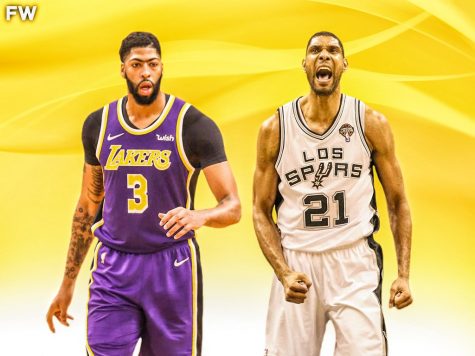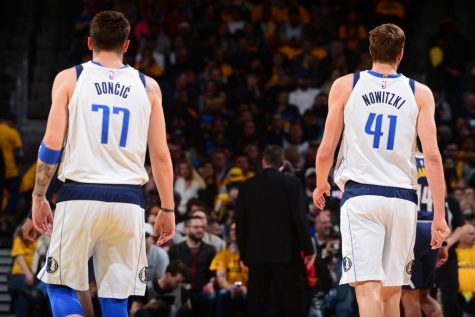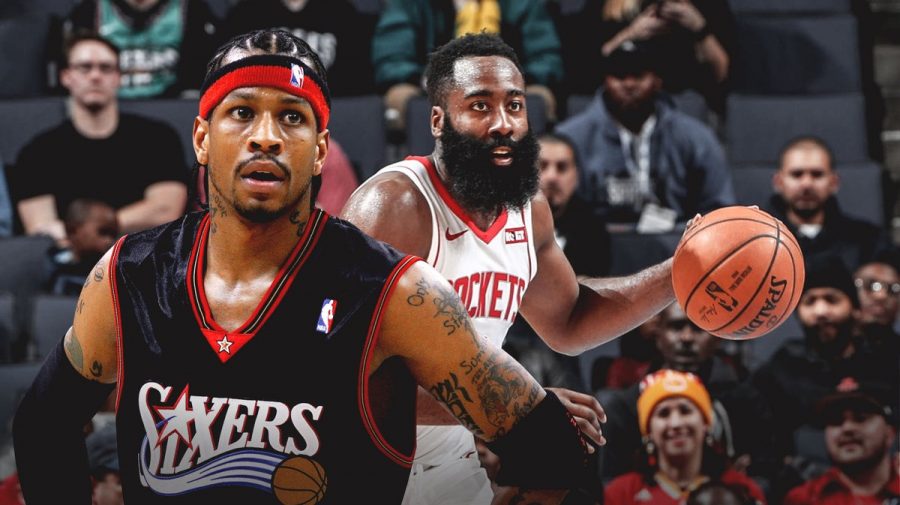Statistics Don’t Tell the Whole Story
Why Modern NBA Stats Aren’t Comparable to Those in the Past
January 12, 2021
Basketball fans and the media often compare players who competed during different eras. The backbone of these comparisons often centers around statistical evidence. However, it’s crucial to consider the context of how these statistics are produced. In particular, as we study modern player stat lines, it’s important to recognize that the NBA has been in an era of statistical inflation – a trend that will no doubt continue in the years ahead.
Consider that in the closeout game of the 2005 NBA finals, the San Antonio Spurs defeated the defending champion Detroit Pistons 81-74. Fast forward to the 2020 finals. in which the championship Los Angeles Lakers scored over 100 points in all but two of their playoff games. Both the Spurs and Lakers had incredibly talented rosters that featured multiple All-Star caliber scorers. But regardless of the fact that the Spurs’ offense was better relative to their time (San Antonio ranked eighth in offensive rating in 2005 while Los Angeles placed 11th in 2020), the Lakers scored 17 more points per game (113.4 vs. 96.2). The numbers of today are simply more inflated than the numbers of the past, and this is something that has to be considered as we continue to compare the greats of both of these times against each other.

So why are the stats of modern players higher than those who played 15, 25, and 40 years ago? While there are many factors, the bottom line is that the way basketball is played has evolved throughout the history of the game.
To start, the pace of play has heavily increased. Throughout all of NBA history, a game has been 48 minutes. In basketball, pace is defined by the total number of possessions a team has in a game. When there are more possessions in a game, more shots get taken. This results in more points, rebounds, assists, and potential blocks. The pace of the NBA peaked in the early 1960s. During this time, statistical feats were achieved that would be considered unthinkable in today’s game. Hall of Fame center Wilt Chamberlain averaged 50 points and 25 rebounds per game for an entire season. He scored 100 points in a single game! After the 1960s, pace steadily declined until a sudden uptick began in 2012 — one that continues to this day.
Pace of play is not the only playstyle factor that affects stats. The well-documented increase in three-point attempts affects a player’s stats both directly and indirectly. First and foremost, three-point attempts yield more points than two-point attempts. In order to match the efficiency of a player who shoots 35% from three, you would need to hit 52.5% of your two point attempts. That is a big difference.
Throughout the 2000s, Dirk Nowitzki was considered untraditional for his dependence on long-range jumpshots. While he was a capable three-point shooter, he only took three attempts per game in his prime. If he were to play today, that number would surely be much closer to nine or ten attempts per game. Instead of averaging 24 points per game, he might have averaged 28, solely by taking a step back on a few of his jumpshots.

The fact that the majority of today’s players take more shots from three indirectly impacts player statistics, as well. Hall of Fame guard Allen Iverson was one of the most unguardable players of all time. In single coverage, he could get by nearly any defender. The teams Iverson played on, however, were composed of players who were not able or willing to take three pointers. So when Iverson got by his initial defender, there would be four more waiting for him in the paint.
If you compare Iverson’s situation to that of Houston Rockets’ All-Star guard James Harden, you can see why the era heavily influences a player’s stats. Harden is in his prime in the modern era. Consequently, his teams typically feature a plethora of capable and willing shooters, so when he gets by his initial defenders, the defense has to choose between sending help to the wide open paint or staying glued to Houston’s knockdown shooters. So whereas Iverson was forced to take difficult shots with many defenders around him, Harden can get himself both easier scoring opportunities when defenses don’t send help, and easier potential assists when they do.
The current statistical inflation is omnipresent in nearly all of basketball statistics. In the 2002 season, only six players averaged more than 25 points a game. This past season, 12 players surpassed that number. In terms of stuffing the stat sheet, one of the greatest feats is the triple double. The stat has been tracked since 1951, but of the twenty players with the highest number of career triple doubles, seven were in their prime during the back half of the 2010s (when the pace of play spiked). In fact, throughout his 17-year NBA career, 55% of Lebron James’ career triple doubles have occurred in the last four seasons. And that does not even begin to explain where the future of the game is going. Three of the players in the Top 20 (Nikola Jokic, Ben Simmons, and Luka Doncic) are 25 years old or younger. Doncic has only played two full seasons in the NBA! Speaking of Doncic, his team, the 2020 Dallas Mavericks, sported the most statistically efficient offense of all time. Fully embracing the modern style of basketball, Dallas scored 116.7 points for every 100 possessions.
This statistical quandary plays out in real time when people try to establish ranking lists throughout the history.of the game. For example, in recent years, it has been a topic of discussion where Harden ranks in the all-time shooting guard discussion. While it is widely agreed the top two are Michael Jordan and Kobe Bryant, the third spot is very much undecided. And when discussing the two leading candidates for that third spot (Harden and Iverson), advocates for the former typically focus on the statistical greatness of his career. In Iverson’s best statistical year, 2006, The Answer averaged 33 points, seven assists, and three rebounds a showing. But when compared to Harden’s 2019 season, in which he averaged 36 points, eight assists, and seven rebounds, it would appear that Harden did everything Iverson did, but better. These numbers, however, do not take into account the pace of play, volume of three pointers, and shooting capabilities of player teammates.
This inflation will not change anytime soon. If anything, it will grow exponentially as teams lean more and more into the fast pace and high-volume, three-point shooting of the modern era. Last season, 21-year-old guard Trae Young averaged 30 points and nine assists per game. Twenty-six-year-old Giannis Antetokounmpo averaged 30 points, 14 rebounds, and six assists a game, and he did not even play three full quarters! Averaging those numbers for an entire season would seem impossible to anyone in the past 40 years. Does that mean that these players are already better than the greats of the past? Of course not. Numbers will always be a part of how we process and digest what we see happen on the court, but it is crucial that we think about the way these numbers are produced, and the circumstances that allow some players to achieve these feats.


